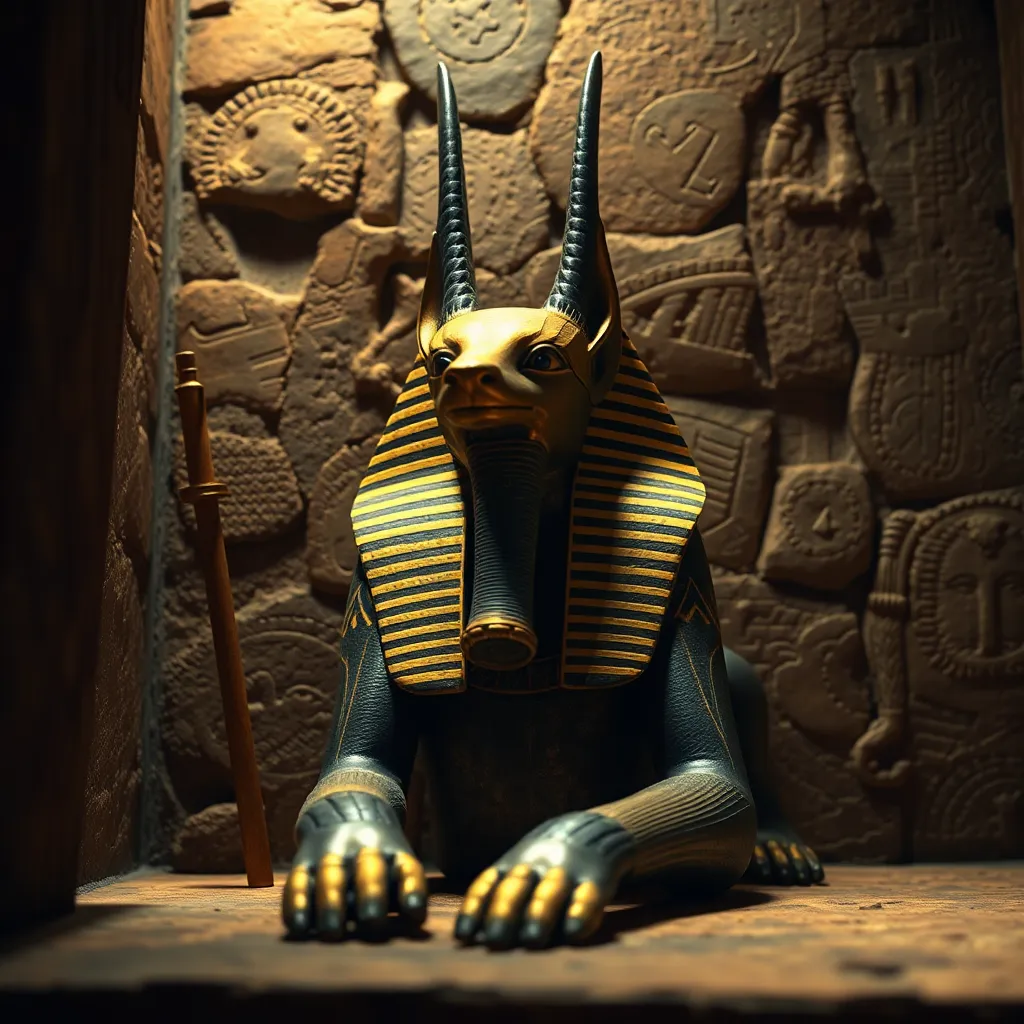The Golden Serpent: Exploring the Significance of Cipactli in Inca Art and Ritual
I. Introduction
Cipactli, a significant figure in Mesoamerican mythology, is often depicted as a primordial creature, embodying the chaos of creation. This mythological being plays a crucial role in the Aztec creation myths, where it is often described as a giant crocodile or serpent that was cut into pieces to create the world. Its representation varies across cultures, but its essence remains tied to creation and transformation.
In Inca culture, the Golden Serpent holds immense importance, symbolizing fertility, life, and the cyclical nature of existence. The Inca civilization, with its rich tapestry of myths and rituals, incorporated beliefs from various cultures, including those surrounding Cipactli. This article will explore the significance of Cipactli in both Inca art and ritual, shedding light on its enduring legacy.
II. The Mythological Origins of Cipactli
A. Cipactli in Aztec creation myths
Cipactli is primarily known from Aztec mythology, where it is featured prominently in the creation narrative. According to these myths, the gods Tezcatlipoca and Quetzalcoatl needed a body to form the earth, and they found Cipactli, the Earth Monster. They battled with her, ultimately killing her and using her body to create the land, mountains, and rivers.
B. Symbolism of Cipactli as a primordial being
Cipactli symbolizes chaos and the primordial state of the universe. As a creature that existed before the formation of the earth, it represents the raw, untamed forces of nature. This duality of destruction and creation is fundamental to understanding Cipactli’s significance in Mesoamerican and Andean cosmologies.
C. Connections to other mythological creatures in South America
Similar serpent figures appear in various South American myths, often symbolizing duality, transformation, and fertility. For instance, the Inca deity Amaru, a serpent associated with water and fertility, echoes the themes present in Cipactli’s stories, illustrating a shared cultural heritage across the region.
III. The Role of Cipactli in Inca Cosmology
A. Cipactli’s place in the Inca pantheon
While Cipactli is primarily an Aztec figure, its influence can be seen in Inca cosmology. The Inca recognized various serpent deities, with Cipactli embodying a connection to the underworld and the cyclical nature of life and death.
B. The serpent as a symbol of fertility and life
Inca society revered serpents, associating them with fertility, agriculture, and abundance. The Golden Serpent was viewed as a guardian of crops and a sign of prosperity, reflecting the Inca’s agricultural lifestyle.
C. Comparisons with other serpent deities in Andean cultures
- Amaru: A powerful serpent associated with water and fertility.
- Supay: The god of the underworld, often depicted as a serpent.
- Yacumama: A water spirit represented as a great serpent, protector of rivers and lakes.
IV. Cipactli in Inca Art
A. Depictions of Cipactli in textiles and pottery
Inca artisans incorporated the imagery of serpents, including representations of Cipactli, in various art forms. Textiles, pottery, and metalwork often featured intricate designs showcasing serpentine forms, reflecting the creature’s significance in their culture.
B. Iconography and stylistic interpretations
The iconography of Cipactli is characterized by its stylized representation, often featuring geometric patterns and vibrant colors. Artists conveyed the essence of Cipactli not just through realism but also through abstraction, emphasizing its mythical qualities.
C. Analysis of the artistic techniques used in creating Cipactli imagery
Inca artists employed a variety of techniques to create Cipactli imagery, including:
- Weaving: Utilizing complex patterns to create textures that mimic scales.
- Pottery: Shaping clay into serpent forms, often adorned with symbolic motifs.
- Metalwork: Crafting intricate serpent figures from gold and silver, emphasizing the creature’s divine status.
V. Ritual Practices Involving Cipactli
A. Ceremonial significance of the Golden Serpent
Cipactli held a prominent place in Inca rituals, often representing the connection between the earthly realm and the spiritual world. The Golden Serpent was invoked in ceremonies to ensure agricultural fertility and community well-being.
B. Festivals and rituals dedicated to Cipactli
Several festivals celebrated the Golden Serpent, including:
- Inti Raymi: A festival honoring the sun god, where serpents were invoked for fertility.
- Qoyllur Rit’i: A pilgrimage where participants sought blessings from serpent deities.
C. The role of priests and shamans in these rituals
Inca priests and shamans played a crucial role in performing rituals dedicated to Cipactli, acting as intermediaries between the people and the divine. Their knowledge of herbal medicine and spiritual practices was essential in invoking the blessings of the Golden Serpent.
VI. The Influence of Cipactli on Inca Society
A. How Cipactli shaped cultural norms and practices
Cipactli’s significance influenced various aspects of Inca life, from agricultural practices to social rituals. The reverence for this serpent fostered a culture that valued harmony with nature and respect for the earth.
B. The serpent’s impact on agriculture and community life
As a symbol of fertility, Cipactli was integral to agricultural success. Farmers performed rituals to honor the Golden Serpent, believing that such acts would ensure bountiful harvests and a prosperous community.
C. Stories and oral traditions surrounding Cipactli
Oral traditions regarding Cipactli have been passed down through generations, often highlighting its role as a protector and provider. These stories reinforce the serpent’s importance in the cultural psyche and its embodiment of life and regeneration.
VII. Modern Interpretations and Legacy
A. The resurgence of interest in Cipactli in contemporary culture
In recent years, there has been a renewed interest in Cipactli, with artists and scholars exploring its significance in modern contexts. This resurgence highlights the importance of understanding and preserving indigenous mythologies.
B. Artistic and scholarly representations of Cipactli today
Contemporary artists often draw inspiration from Cipactli, creating works that reflect its themes of creation and transformation. Scholars are also revisiting ancient texts and artifacts to uncover deeper meanings associated with this mythical being.
C. The importance of preserving Inca heritage and mythology
Preserving the stories and significance of Cipactli is vital for maintaining cultural heritage. Efforts to document and promote Inca mythology contribute to a greater understanding of indigenous identities and their historical narratives.
VIII. Conclusion
A. Summary of key points about Cipactli’s significance
Cipactli, as a symbol of chaos and creation, holds a significant place in both Aztec and Inca mythologies. Its representation in art and ritual underscores its role in shaping cultural practices and beliefs.
B. Reflection on the interconnectedness of myth, art, and ritual
The exploration of Cipactli highlights the interconnectedness of myth, art, and ritual in ancient societies. Each element contributes to a holistic understanding of cultural identity and spiritual beliefs.
C. Final thoughts on the enduring legacy of the Golden Serpent in Inca culture
The legacy of Cipactli endures, reminding us of the rich tapestry of mythology that continues to influence contemporary culture. As we delve into the past, we uncover the profound connections that bind us to the stories of our ancestors.



